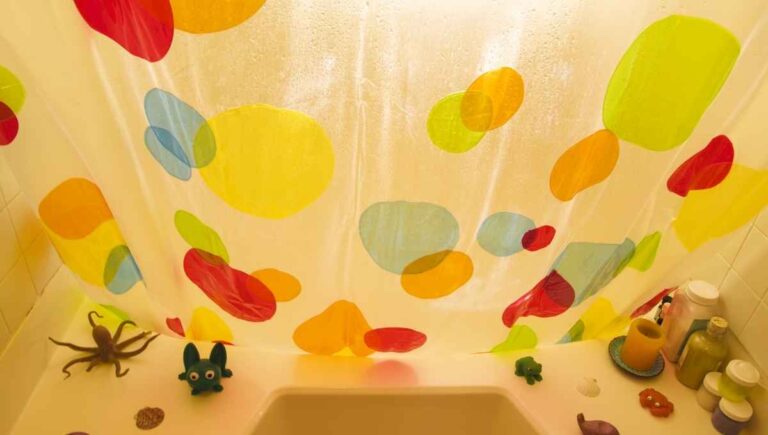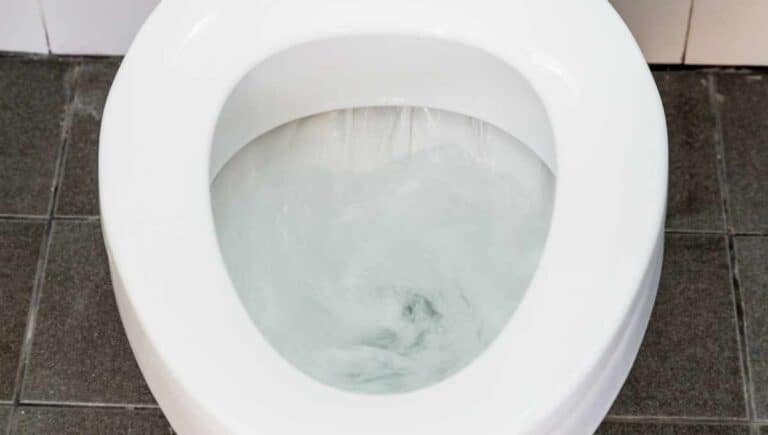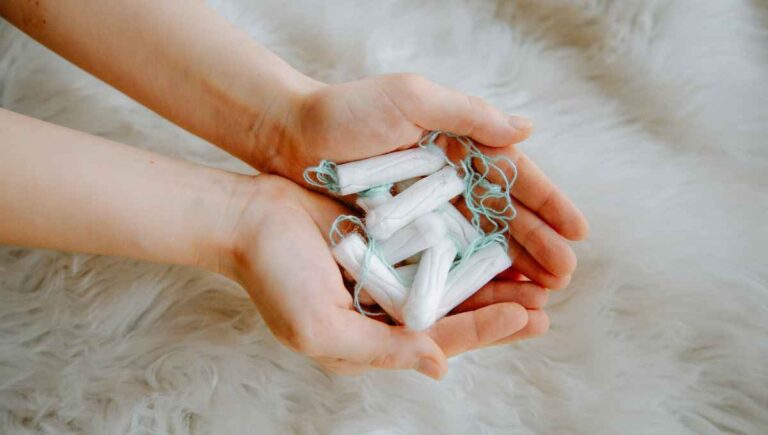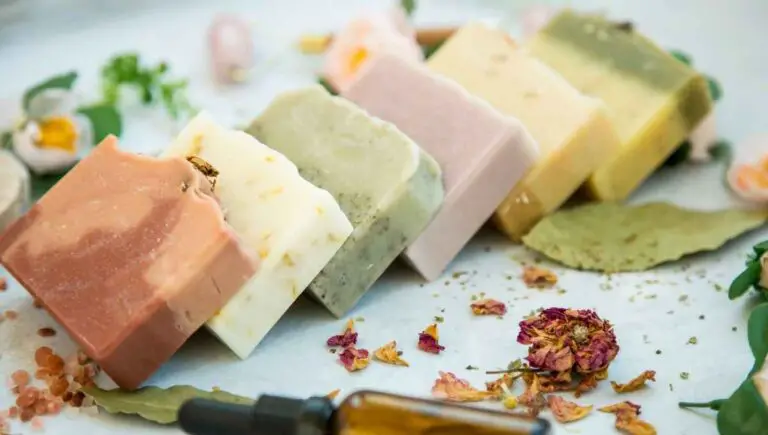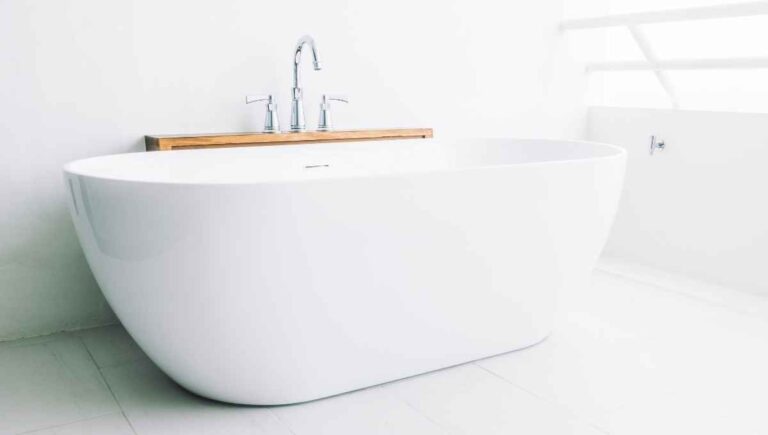Can You Flush Kitty Litter Down the Toilet? (Read This ASAP)

As a cat owner, you may be wondering if you can dispose of your kitty litter by flushing it down the toilet. It may seem like a convenient and easy way to get rid of litter, but is it really safe to do so?
You should never flush kitty litter down the toilet, as this can cause serious damage to your plumbing and septic system. Additionally, it can be harmful to the environment, as kitty litter may contain toxins and bacteria that can contaminate waterways and harm aquatic life.
So, what are the alternatives to flushing kitty litter down the toilet? In this blog post, we’ll explore some eco-friendly options for disposing of your cat’s litter.
By the end of this post, you’ll be equipped with the knowledge you need to be a responsible and sustainable cat owner. Keep reading to find out more!
This post contains affiliate links. This means Household Blogger may earn a commission should you make a purchase using any of our links. Please refer to our full affiliate disclosure policy for full details.
Here’s a Quick Pro Tip!
Here are some of our top picks:
1. World’s Best Cat Litter Flushable Clumping Formula – Made from natural, biodegradable materials.
2. Cat’s Pride Lightweight Clumping Cat Litter – Every jug you purchase donates a pound of litter to an animal welfare organization.
3. Swheat Scoop Natural Wheat Litter – Made from wheat, and is flushable, biodegradable, and eco-friendly.
Understanding the Risks and Hazards
This section will explore the potential dangers and consequences of flushing kitty litter, including environmental and plumbing risks. Understanding these risks can help you make an informed decision about how to safely dispose of your kitty litter.
What happens when you flush kitty litter?
When you flush your toilet, the waste and water get pushed through the pipes in your home and out to the municipal sewer system. From there, the wastewater is transported to a treatment plant, which goes through a series of processes to remove contaminants and purify the water.
While it may be tempting to flush your kitty litter down the toilet, it’s not a good idea for several reasons. Kitty litter is designed to clump when it comes into contact with moisture, which means that it can quickly clog your pipes and cause backups in your plumbing system. This can lead to costly repairs and potential damage to your home.
Additionally, cat feces can contain harmful pathogens, including bacteria and parasites, which can contaminate the water supply and pose a risk to human health. Flushing kitty litter down the toilet can also contribute to environmental problems, as it introduces non-biodegradable materials into the water system that can harm aquatic life.
It’s also important to note that most kitty litters are not designed to be flushed. This is because they are made from materials that do not break down in the water, such as clay or silica. When these materials enter the water system, they can cause blockages and damage to the infrastructure, leading to costly repairs and potential health risks.
Furthermore, many kitty litters contain additives and fragrances that can be harmful to the environment and contribute to water pollution. For these reasons, it’s important to dispose of your kitty litter properly and not flush it down the toilet.
Health risks of flushing kitty litter
One of the biggest risks of flushing kitty litter is the potential to contaminate the water supply with harmful pathogens. Cat feces can contain various harmful bacteria and parasites, including Toxoplasma gondii, which can cause serious illness in humans. When flushed down the toilet, these pathogens can enter the water system and pose a risk to public health.
In addition, flushing kitty litter can also contribute to plumbing problems and backups, which can lead to the release of harmful gases such as methane and hydrogen sulfide. These gases can be hazardous to human health and can cause symptoms such as headaches, dizziness, and nausea.
Flushing kitty litter can also pose a risk to animal health, particularly to marine life. When non-biodegradable materials such as clay or silica enter the water system, they can harm aquatic life and disrupt ecosystems. Additionally, the additives and fragrances in many kitty litters can be toxic to animals and contribute to environmental pollution.
Furthermore, flushing kitty litter can also contribute to the spread of diseases among wildlife populations. When cat feces containing harmful pathogens enter the water system, they can be ingested by other animals and cause illness or death.
You might also enjoy our post on Whether Dawn Dish Soap is Toxic to Cats and Dogs
Environmental concerns associated with flushing kitty litter
When kitty litter is flushed down the toilet, it can have a significant impact on water systems. Non-biodegradable materials such as clay or silica can clog pipes and damage infrastructure, leading to costly repairs and potential health risks. Additionally, cat feces can contain harmful pathogens that can contaminate the water supply and pose a risk to public health.
Flushing kitty litter can also harm wildlife, particularly marine life. When non-biodegradable materials can harm aquatic life and disrupt ecosystems when they enter the water system. Additionally, cat feces can contain harmful pathogens that can be ingested by other animals and cause illness or death.
Many kitty litters contain microplastics, which are tiny pieces of plastic that are less than 5 millimeters in size. These microplastics can enter the water system when kitty litter is flushed down the toilet and contribute to the growing problem of plastic pollution in our oceans and waterways.
Finally, flushing kitty litter can contribute to water pollution. The additives and fragrances in many kitty litters can be toxic to the environment and contribute to the pollution of our waterways.
Additionally, the clay or silica used in many kitty litters can contain heavy metals or other harmful chemicals that can leach into the water system and pose a risk to public health.
The Plumbing and Septic System
Flushing kitty litter down the toilet can pose safety concerns for homeowners, particularly if they have a septic system. When non-biodegradable materials such as clay or silica enter the septic system, they can clog pipes and damage infrastructure, leading to costly repairs and potential health risks.
Additionally, flushing kitty litter can contribute to the release of harmful gases such as methane and hydrogen sulfide, which can be hazardous to human health.
Flushing kitty litter can also have a significant impact on plumbing and septic systems. Non-biodegradable materials such as clay or silica can clog pipes and damage infrastructure, leading to costly repairs and potential health risks.
Cat feces can also contain harmful pathogens that can contaminate the septic system and pose a risk to public health. It’s important to note that even if you are connected to a public sewer system, flushing kitty litter can still have a negative impact on plumbing infrastructure.
The non-biodegradable materials in many kitty litters can clog pipes and damage sewer infrastructure, leading to costly repairs and potential health risks.
Legal considerations for flushing kitty litter
When it comes to flushing kitty litter, there are a few legal considerations that pet owners need to keep in mind. The practice of flushing kitty litter down the toilet may be prohibited or regulated by local and national laws and regulations.
In the United States, for example, the Environmental Protection Agency (EPA) recommends that kitty litter should not be flushed down the toilet, as it can contain harmful bacteria and parasites that can contaminate water sources. In addition, some states and local governments have enacted laws and regulations that specifically prohibit the flushing of kitty litter.
For instance, the city of Maysville in the state of Kentucky strictly prohibits flushing kitty litter and or dried pet waste into your toilet. The city argues that toilets use less water than they use to, and it’s not enough to flush away all the litter/feces.
Aside from these legal regulations, there are also environmental concerns associated with flushing kitty litter. Kitty litter can contain chemicals and other pollutants that can harm aquatic life and the environment.
Flushing kitty litter down the toilet can lead to the accumulation of these pollutants in water sources, potentially leading to harm to aquatic life.
Types of Kitty Litter That Can Be Flushed
While not all kitty litters can be flushed down the toilet, some types are designed specifically for this purpose. In this section, we’ll explore the various options available to cat owners who are looking for a more convenient and eco-friendly way to dispose of their cat’s waste.
Clumping vs. non-clumping vs. scented litter
When it comes to kitty litter, there are three main types: clumping, non-clumping, and scented. Each type has its own set of pros and cons, especially when it comes to flushing it down the toilet.
Clumping litter is made of bentonite clay that clumps together when it comes into contact with liquid. This type of litter is great for cat owners who don’t want to replace the entire litter box every time their cat uses it.
The clumps can be easily scooped out and thrown away, leaving the rest of the litter untouched. However, when it comes to flushing, clumping litter can be problematic. The clumps can easily clog pipes and cause damage to plumbing systems.
Non-clumping litter, on the other hand, is made from materials such as recycled paper, wood chips, or silica gel crystals. This type of litter is much lighter than clumping litter, and it’s also more eco-friendly. However, non-clumping litter doesn’t absorb liquid as well as clumping litter, which can make it less effective at controlling odors.
When it comes to flushing, non-clumping litter is generally considered safer than clumping litter since it doesn’t form clumps that can clog pipes. However, it’s still important to use caution and avoid flushing too much litter at once.
Scented litter is designed to mask unpleasant odors with a variety of fragrances, such as lavender or pine. This type of litter is great for cat owners who are sensitive to smells or who want to keep their litter box area smelling fresh.
However, scented litter can also cause problems when it comes to flushing. The added chemicals and fragrances can be harmful to aquatic life, and they can also clog pipes and cause damage to plumbing systems.
You might also enjoy our post on Whether You Can Flush a Mouse Down The Toilet
Biodegradable and flushable litter options
As more people become concerned about the environmental impact of traditional kitty litter, biodegradable and flushable options are becoming more popular. These types of litter are designed to break down naturally over time, making them a more eco-friendly choice. But are they safe to flush down the toilet?
Biodegradable litter is typically made from natural materials such as corn, wheat, or recycled paper. Unlike traditional litter, biodegradable litter is designed to break down over time, reducing the amount of waste that ends up in landfills.
However, it’s important to note that not all biodegradable litters are flushable. Some biodegradable litter may contain materials that can clog pipes, so it’s important to read the label carefully and follow the manufacturer’s instructions.
Flushable litter is designed to dissolve and break down quickly when it comes into contact with water. This type of litter is often made from materials such as wood chips, sawdust, or plant fibers. While flushable litter is a convenient option, caution is important when flushing it down the toilet.
Not all flushable litter are created equal, and some may contain materials that can damage plumbing systems. It’s also important to note that even flushable litter should not be flushed in large quantities, as it can still cause clogs.
When it comes to flushing cat feces, it’s important to follow certain guidelines to ensure that you’re not putting your plumbing system or the environment at risk. First, it’s important never to flush cat feces without litter.
Feces can contain harmful bacteria that can contaminate waterways, and flushing it without litter can increase the risk of clogs and damage to plumbing systems. If you do choose to flush cat litter, it’s important only to flush small amounts at a time and to avoid flushing litter that is not specifically labeled as flushable.
Alternatives to Flushing Kitty Litter
While it may be tempting to flush kitty litter down the toilet for convenience, it can be harmful to your plumbing and the environment. Fortunately, there are several safe and eco-friendly alternatives that you can explore.
Safe and responsible disposal methods for kitty litter
When it comes to disposing of kitty litter, it’s important to do so safely and responsibly. There are several methods to choose from, each with its own set of pros and cons.
- Trash: One of the most common ways to dispose of kitty litter is by simply throwing it in the trash. While this method is convenient, it’s important to note that traditional kitty litter can take up to 500 years to decompose in a landfill. This can contribute to environmental problems such as pollution and greenhouse gas emissions.
- Composting: Another option is to compost your kitty litter. This method involves mixing the used litter with organic materials such as leaves or grass clippings, allowing it to decompose naturally. While this method is more eco-friendly than simply throwing the litter in the trash, it’s important to note that not all types of kitty litter are suitable for composting. Only biodegradable litter should be composted, as other types of litter can contain harmful chemicals that can harm plants or animals.
- Flushing: As we discussed earlier, some types of kitty litter are designed to be flushable. While this method is convenient, it’s important to note that not all types of kitty litter are safe to flush. Only use a litter that is specifically labeled as flushable, and avoid flushing large quantities of litter at once to prevent clogs.
- Pet Waste Disposal Systems: There are also pet waste disposal systems that are specifically designed for disposing of cat waste. These systems use a special type of litter that is designed to be broken down quickly, making it more eco-friendly than traditional litter. However, it’s important to note that these systems can be expensive and may not be feasible for everyone.
In summary, there are several safe and responsible methods for disposing of kitty litter. Each method has its own set of pros and cons, so it’s important to choose the method that works best for you and your lifestyle.
Whether you choose to throw the litter in the trash, compost it, flush it, or use a pet waste disposal system, be sure to do so responsibly to minimize your impact on the environment.
Composting kitty litter
Composting kitty litter is a sustainable way to dispose of used litter, and it involves breaking down organic materials into a nutrient-rich soil amendment. The process involves mixing used litter with organic materials, such as leaves, grass clippings, or food waste.
This mixture is then placed in a compost bin and allowed to decompose for several months. The result is a nutrient-rich compost that can be used to fertilize plants and gardens. It’s essential to choose the right type of litter for composting. Only biodegradable and natural litter, such as those made from wood, paper, or plant materials, should be composted.
Litters that contain clay, silica gel, or synthetic fragrances should not be composted, as they can contain harmful chemicals that can harm plants or animals. Composting kitty litter has several benefits. It reduces the amount of waste that ends up in landfills, which is better for the environment.
The end result of composting is a nutrient-rich soil amendment that can be used to fertilize plants and gardens. Additionally, composting can be a cost-effective way to dispose of kitty litter, especially if you already have a compost bin.
However, there are also some downsides to composting kitty litter. It can be a time-consuming process, as it can take several months for the litter to decompose. The decomposition process can also produce an unpleasant odor, so choosing a location for the compost bin away from your home is important.
Composting can also be a health hazard if not done properly, as it can attract pests and harbor harmful bacteria.
Recycling kitty litter containers
Recycling kitty litter containers is an important step towards reducing waste and preserving the environment. Most cat litter containers are made of plastic, which can take hundreds of years to decompose. Recycling these containers can help reduce the amount of plastic waste in landfills and oceans and conserve natural resources.
The first step in recycling litter containers is to check if they are accepted in your local recycling program. Some recycling programs may not accept plastic containers that have come into contact with pet waste, so it’s important to follow their guidelines.
If your local recycling program does not accept litter containers, you can look for specialized recycling programs that accept them. Many pet stores and online retailers offer programs that allow you to send in your used litter containers for recycling.
There are several environmental benefits to recycling kitty litter containers. Recycling conserves natural resources by reducing the need for new materials to be produced. It also reduces greenhouse gas emissions and energy consumption associated with producing new materials.
Recycling also helps reduce the amount of plastic waste in landfills and oceans, which can harm wildlife and marine ecosystems.
However, there are also some downsides to recycling kitty litter containers. The recycling process can be energy-intensive and may require the use of chemicals that can be harmful to the environment.
Additionally, not all recycling programs accept litter containers, which can make it difficult for some people to recycle them. It’s also important to note that recycling should not be seen as a replacement for reducing and reusing, as these practices are even more effective in reducing waste.
You might also enjoy our post on Whether Toielt Bowel Cleaner Can Kill a Dog or Cat
Special Considerations When Flushing Kitty Litter Down the Toilet
This section of the blog will cover important information you need to know before deciding to flush your cat’s litter down the toilet. From potential plumbing problems to environmental impacts, we’ll explore the factors you need to consider to make an informed decision.
Types of Litter to Avoid Flushing
When it comes to disposing of kitty litter, many pet owners wonder whether they can flush it down the toilet. The short answer is that not all types of litter are safe to flush. In fact, some types of litter can cause serious damage to your plumbing and harm the environment.
Here are two types of litter you should avoid flushing down the toilet:
- Clay litter: This type of litter is very popular, but it’s not safe to flush. Clay litter is made from sodium bentonite, which absorbs moisture and clumps together when your cat urinates. While this feature makes it easy to clean your cat’s litter box, it also makes it difficult for water to pass through when you try to flush it down the toilet. This can cause blockages in your pipes, leading to costly repairs.
- Scented litter: Scented litter may smell nice to humans, but it’s not good for your plumbing or the environment. Many scented litters contain chemicals and artificial fragrances that can be harmful to aquatic life when they enter the water supply. Additionally, these chemicals can interfere with the natural balance of bacteria in your septic tank or sewage treatment plant, making it less effective at breaking down waste.
Overall, it’s best to stick with litter that’s specifically designed to be flushed down the toilet or to dispose of your cat’s waste in the trash. Doing so can help prevent plumbing problems and protect the environment.
Maintenance of Plumbing and Septic System
Maintaining your plumbing and septic system is essential to prevent clogs and damage. To ensure that everything runs smoothly, it’s important to focus on regular cleaning and system inspections.
Regular cleaning includes flushing hot water down your drains to help clear away any build-up. Additionally, using drain cleaners and bacterial treatments can help break down and remove organic matter. Cleaning your cat’s litter box frequently is also important to prevent waste from accumulating and causing blockages.
A professional plumber or septic company should conduct system inspections on a regular basis. This can help identify any potential issues before they turn into major problems, such as leaks or clogs. Depending on your system, you may need to have it inspected annually or every few years.
Following any specific maintenance instructions provided by your system manufacturer or installer is also important to ensure that you’re taking the best possible care of your system. By taking these steps to maintain your plumbing and septic system, you can help ensure that your home remains free of clogs and damage.
Proper Disposal Techniques
Proper disposal of kitty litter is essential to avoid plumbing problems and protect the environment. When flushing kitty litter down the toilet, it’s important only to flush small amounts at a time.
Flushing large amounts of litter can lead to clogs in your pipes or septic system, which can be expensive to repair. Ideally, you should only flush litter down the toilet once or twice a day to avoid overwhelming your plumbing or septic system.
If you notice undissolved litter in your toilet after flushing, it’s important to take immediate action. Scoop out any remaining litter and dispose of it in the trash. You can also try using a plunger to help dislodge any stuck litter. However, if the problem persists, it’s best to call a plumber or septic professional to address the issue.
It’s also important to note that if you’re not able to flush your cat’s litter safely, you should dispose of it in the trash instead. This can help prevent environmental damage and plumbing problems.
By following these techniques for proper disposal of kitty litter, you can help ensure that your plumbing and septic system remain in good working order. Additionally, you’ll be doing your part to protect the environment and prevent potential problems down the line.
You might also enjoy our post on Whether You Can Flush Food Down The Toilet
Best Practices for Kitty Litter
As a cat owner, finding the right litter and disposal method can be overwhelming. In this section, we will share some tips and tricks to help you manage your kitty litter effectively and safely.
Tips for properly disposing of kitty litter
When it comes to disposing of kitty litter, it’s important to do it properly to avoid any environmental or health hazards. Here are some tips on how to dispose of kitty litter safely and responsibly:
How to prepare kitty litter for disposal:
- Scoop the used litter out of the litter box daily, and dispose of it in a plastic bag.
- Tie the bag securely to prevent any spills or leaks.
- If you use clumping litter, make sure to break up any clumps before disposing of them to prevent clogs in your pipes or septic system.
- If you use non-clumping litter, you can dispose of the entire contents of the litter box once a week or as needed.
Precautions to take when disposing of kitty litter:
- Never flush kitty litter down the toilet. Kitty litter is not biodegradable, and it can cause serious damage to your plumbing and the environment.
- Do not dispose of kitty litter in the trash can or recycle bin. Most municipal waste management systems do not accept pet waste or kitty litter, so check with your local authorities for specific instructions on how to dispose of it.
- Avoid composting kitty litter. Cat feces can contain harmful bacteria and parasites, which can survive in the soil and pose a risk to humans and other animals.
- Consider using biodegradable or compostable litter made from natural materials, such as corn, wheat, or wood. These types of litter are more eco-friendly and can be disposed of safely in a compost pile or garden bed, as long as you follow proper composting guidelines.
By following these tips, you can properly dispose of kitty litter and help protect the environment and your health. Always check your local regulations and guidelines for pet waste disposal to ensure you follow the proper procedures.
Cleaning and maintaining the litter box
When it comes to taking care of your cat, one of the most important things you can do is to keep their litter box clean and well-maintained. Not only does a dirty litter box make for an unpleasant experience for both you and your cat, but it can also lead to health hazards and litter box avoidance behavior.
By following these tips for cleaning and maintaining your cat’s litter box, you can ensure a clean and comfortable environment for your furry friend.
It’s essential to keep your cat’s litter box clean because a dirty litter box can cause stress and discomfort for your cat. This discomfort may lead to improper elimination outside of the litter box, which can be a challenge for both you and your cat.
Furthermore, urine and feces left in the litter box for too long can produce strong odors that are unpleasant for both you and your cat, and may even attract flies and other insects, creating a potential health hazard for your household.
To maintain a clean litter box, you should scoop the litter box at least once a day to remove any solid waste and clumps. Additionally, you should change the litter entirely every 2-3 weeks or more frequently if you have multiple cats or notice a strong odor.
Using a litter mat or tray can also help to collect any litter that your cat may track outside the box, reducing mess and litter tracking. You should also wash the litter box regularly with soap and water, and dry it thoroughly before adding fresh litter. Finally, consider using a litter deodorizer or baking soda to help control odors.
Promoting safe and hygienic practices with your cat
As a cat owner, it’s your responsibility to promote safe and hygienic practices with your cat. This means encouraging your cat to use the litter box correctly and maintaining their health through regular veterinary care.
Proper litter box use is essential to maintain hygiene and prevent litter box avoidance behavior. Start by placing the litter box in a quiet and private area of the house, away from your cat’s food and water.
Show your cat where the litter box is located and encourage them to use it by gently placing them inside after meals or naps. It’s also important to keep the litter box clean, as a dirty litter box may discourage your cat from using it.
You may want to consider providing multiple litter boxes if you have multiple cats and avoiding scented litter or litter box liners that may be irritating to your cat.
Regular veterinary care is also crucial to your cat’s overall health and hygiene. Schedule annual check-ups with your veterinarian, and consider additional visits if you notice any changes in your cat’s behavior or health.
Your veterinarian can help to identify and treat any health issues before they become more serious and can provide advice on proper nutrition and grooming practices. Additionally, be sure to keep your cat’s vaccinations up to date and treat them regularly for fleas and other pests.
By promoting proper litter box use and maintaining your cat’s health through regular veterinary care, you can ensure a safe and hygienic environment for your cat and your household. Always remember to practice good hygiene yourself, including washing your hands after handling cat litter or waste, and seek veterinary care if you notice any unusual behavior or symptoms in your cat.
Final Thoughts
In conclusion, while it may be tempting to dispose of cat litter down the toilet, it is not recommended. Most kitty litters are not biodegradable and can cause blockages in your pipes, leading to costly repairs.
Additionally, the waste from cats can contain harmful parasites and bacteria that can contaminate water sources if flushed down the toilet. Instead, it is best to dispose of cat litter in a sealed bag and throw it in the trash. By following these guidelines, you can help protect both your plumbing and the environment.




